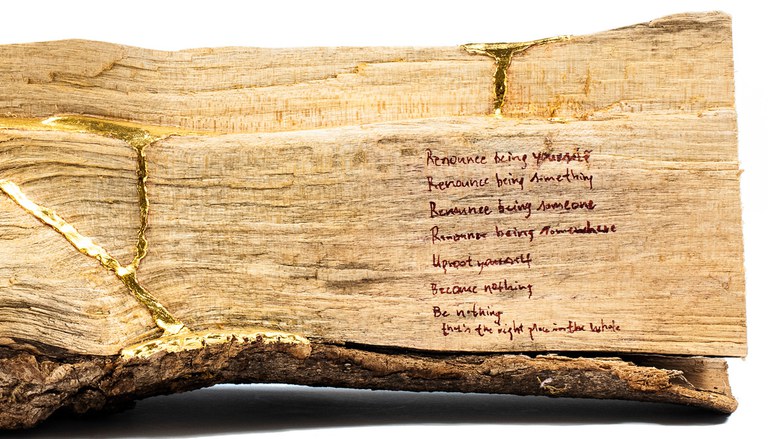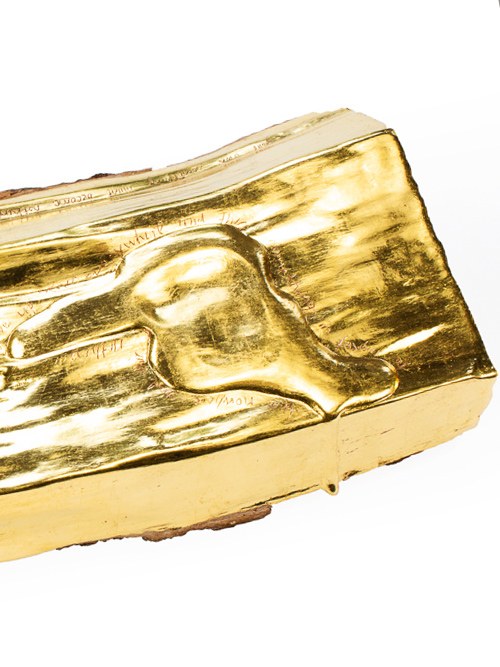*This is a longer text about my KNIEHOLZ series. For an abstract and more pictures please visit the KNIEHOLZ page.*
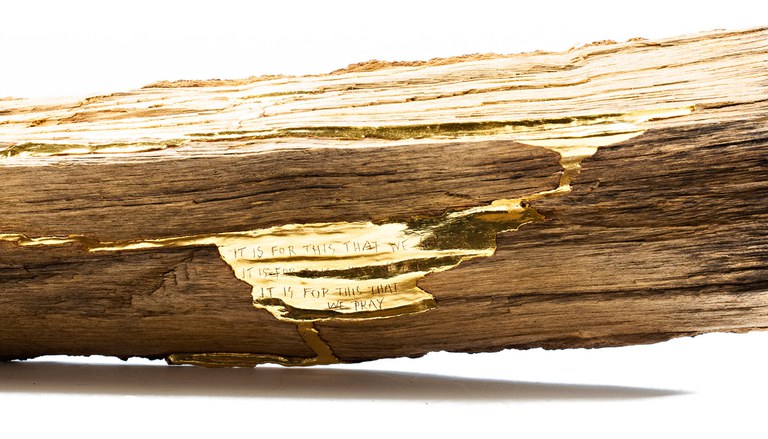
The future is ascetic. And full of joy.
Redemptive suffering is one of the central themes in Christianity, if not its inner core, in view of the fact that the Christian God is one who was born just to die on the Cross to take all sins of mankind away.
Throughout the ages, countless Saints, individuals and whole religious orders saw it (and still see it) as their sacred purpose to sacrifice their whole lives to suffer for the faults of others and to ‚expiate‘ them by taking their place, by suffering on their behalf. Some developed almost superhuman powers while bed-ridden for decades.
While the topic of redemptive suffering is already present in my CONTEMPLATIONS (2017-19) where I micro-handwrite the original texts of female Western mystics on my photographs in order to explore the overlaps of spirituality and sensuality, I wanted to direct the interest on on a much more secular field with these Kneeling Logs (German: Knieholz) by asking for today’s socio-cultural implications of a only seemingly outdated concept like redemptive suffering in a period of our history which seems critical not only for the future of mankind, but for the planet as a whole.
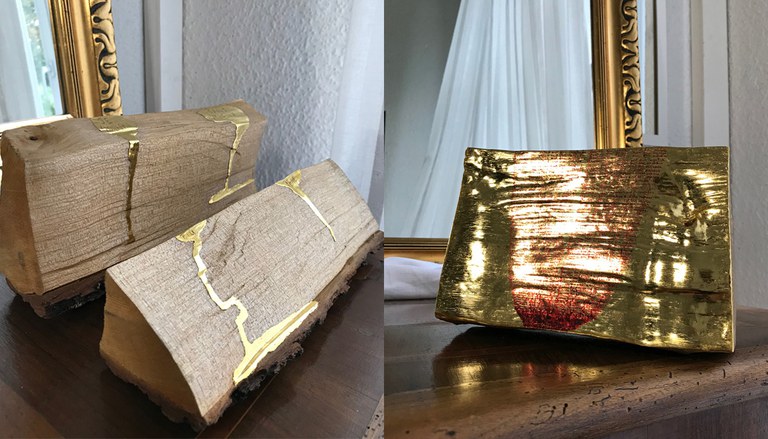
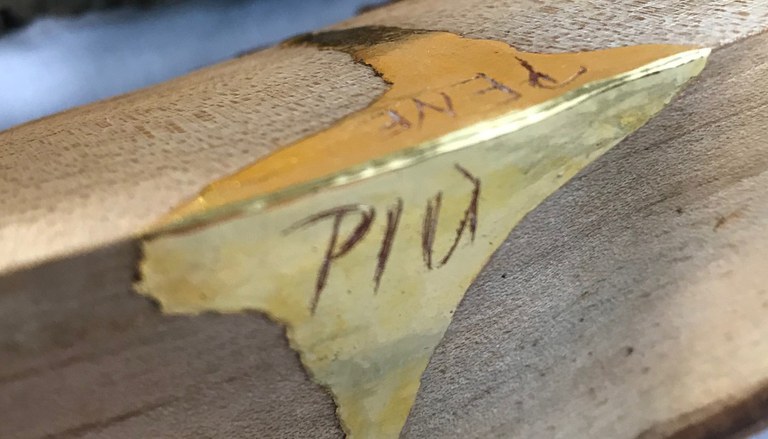
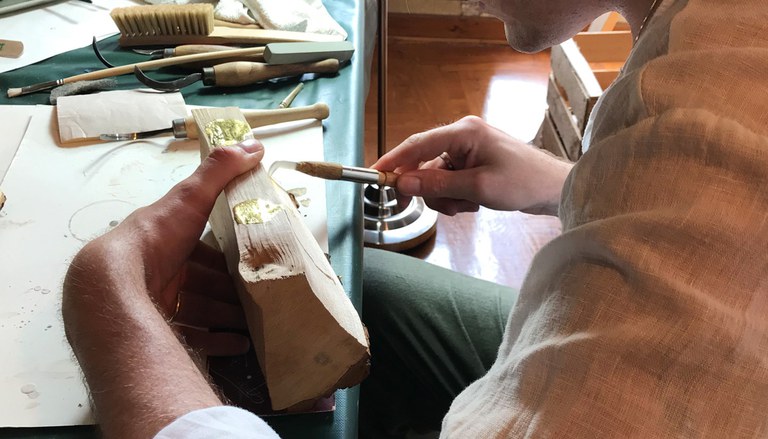
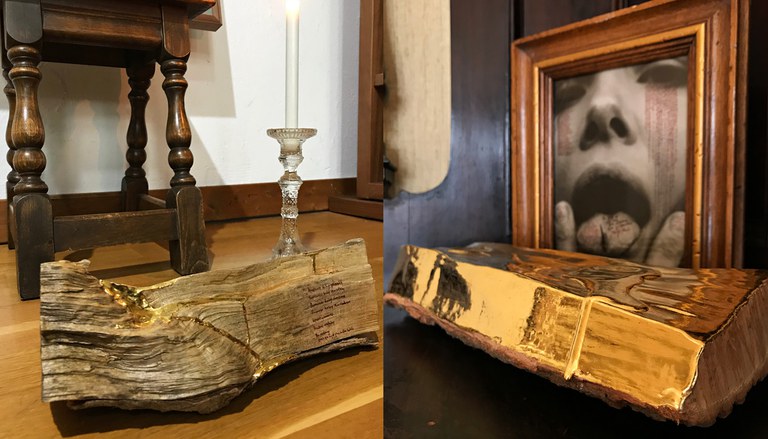
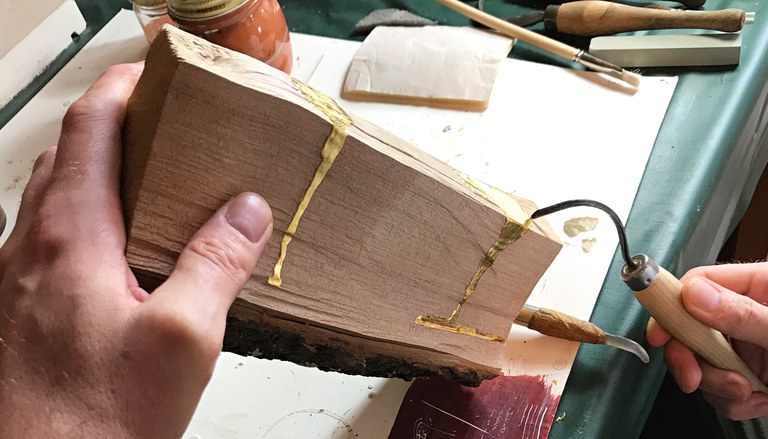
But it’s not only this intended purpose of saving the planet and of salvation of mankind which can transform our sacrifice into joy, it’s also the act of the sacrifice itself which can bring us a deep satisfaction. Acting more responsibly in relation to our environment also opens up new levels of self consciousness and mindfulness, by detoxing the world we also detox ourselves. There can be also joy in pain, all the mystics knew and experienced this, and if not in the pain itself, then in the act of enduring it. This, too, is something which is quickly forgotten in a time where anesthesia is a omnipresent solution to all problems on all levels.
The Knieholz (Kneeling Log) is a hybrid. It is sacred and profane at the same time. I didn’t want to use a tool which is overdetermined by either a religious or a libidinous sphere. The Kneeling Log isn’t for a church, but neither for the darkroom. Nevertheless it’s an artifact of meditation, of prayer, of contemplation, of expiation.
On a formal level, I only use already existing pieces of regular firewood (a largely available and renewable resource) that I get as gifts when I ask people for them, and I only use gold from a local gold beating manufacurer of my hometown (Kühny Blattgoldfabrik, Augsburg). Technically, the gold is applied in a traditional and ancient manner, using only natural materials like chalk / gesso, clay, natural glue, linseed oil, turpentine and shellack.
Like in all my newer works, I write on the finished pieces or carve some text in them, thus destroying the golden surface to reveal its red (clay) and white (chalk) foundations and once again stressing the sacrality of the object with these colors. But unlike my CONTEMPLATIONS series, the text on the Kneeling Logs becomes fragmentary, references are intentionally concealed, authorship becomes questionable. The greatest joy begins after the Ego has disappeared.
*FIND MORE INFORMATION HERE OR CONTACT ME VIA EMAIL FOR A CATALOGUE AND ANY FURTHER INQUIRY*
